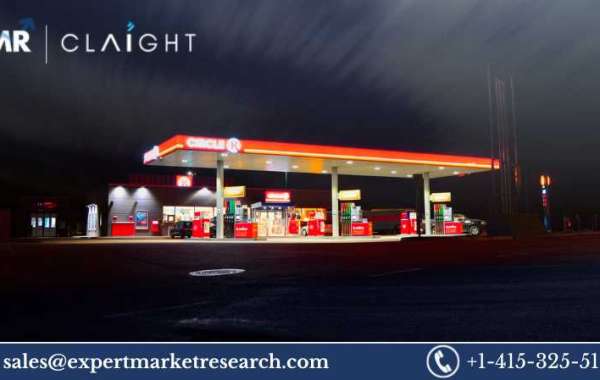The United States service stations retail sales market has experienced steady growth over the years and continues to evolve as consumer preferences shift and new technologies emerge. This market encompasses retail sales made by service stations, including fuel, convenience store products, and car maintenance services. In this article, we will explore the market's outlook, trends, dynamics, opportunities, and challenges, alongside an in-depth competitor analysis.
United States Service Stations Retail Sales Market Outlook
The United States service stations retail sales market is projected to experience growth at a compound annual growth rate (CAGR) of 2.8% between 2025 and 2034. This growth is driven by several factors, including increasing vehicle ownership, rising fuel consumption, and a growing demand for convenience store products at gas stations.
Growth Drivers
Increase in Vehicle Ownership: The growing number of vehicles on the road is directly linked to higher fuel consumption, which in turn increases retail sales at service stations. With more Americans owning vehicles, especially in suburban and rural areas, service stations remain a crucial part of everyday life.
Changing Consumer Behavior: Consumers are seeking convenience and value-added services at service stations. Many gas stations have expanded their offerings, such as convenience stores selling snacks, drinks, and even ready-to-eat meals. This shift in consumer behavior has boosted retail sales beyond fuel alone.
Technological Advancements: The adoption of technologies such as pay-at-the-pump systems, mobile payments, and advanced fuel efficiency has made fueling a faster and more convenient process, which encourages more frequent visits to service stations.
United States Service Stations Retail Sales Market Share Trends
Market Share
North America, with the United States as a key player, holds a significant portion of the global service stations retail sales market. The region benefits from a well-established infrastructure, a large number of service stations, and an affluent consumer base. As of recent projections, North America is expected to continue leading in market share throughout the forecast period.
North America: Dominates with its robust infrastructure, high vehicle ownership, and established retail networks in service stations.
Asia Pacific: Expected to be the fastest-growing region due to rapid urbanization, increasing disposable income, and the growing demand for fuel and convenience services in countries like China, India, and Japan.
Market Trends
Several key trends are shaping the United States service stations retail sales market:
Expansion of Convenience Store Offerings: Gas stations are increasingly focusing on expanding their convenience store offerings. Consumers now expect more than just fuel at service stations; they want food, drinks, and other essential products. This shift is boosting retail sales at service stations across the country.
Electric Vehicle (EV) Charging Stations: With the increasing adoption of electric vehicles, service stations are incorporating EV charging infrastructure to cater to the evolving demand. Although EV sales are still a small percentage of total vehicle sales, the trend is expected to grow rapidly in the coming years, affecting the retail sales market for service stations.
Sustainability and Eco-friendly Initiatives: Consumers are becoming more environmentally conscious, prompting service stations to adopt eco-friendly initiatives, such as offering biofuels, renewable energy sources, and sustainable products at their convenience stores. These initiatives appeal to a growing segment of eco-conscious consumers.
Smart Fueling Solutions: Advanced technologies, such as contactless payment systems, smart pumps, and mobile apps, are enhancing the consumer experience at service stations. These innovations allow for quicker transactions and more personalized services, further driving retail sales.
Get a Free Sample Report with Table of Contents:
https://www.expertmarketresearch.com/reports/united-states-service-stations-retail-sales-market/requestsample
United States Service Stations Retail Sales Market Dynamics Trends
The dynamics of the United States service stations retail sales market are shaped by various factors, both internal and external. These include economic conditions, regulatory changes, consumer preferences, and technological advancements.
Economic Conditions
Economic fluctuations, such as changes in fuel prices or a downturn in consumer spending, can significantly impact retail sales at service stations. During times of economic uncertainty, consumers tend to spend less on non-essential items, which may reduce sales in convenience stores at service stations. On the other hand, periods of economic growth lead to increased consumer spending, which drives higher retail sales in service stations.
Regulatory Changes
Government regulations and policies regarding fuel emissions, environmental protection, and the promotion of electric vehicles are influencing the operations of service stations. For instance, regulations that encourage the use of alternative fuels or tax incentives for EV infrastructure development may prompt service stations to diversify their offerings, thus altering market dynamics.
Consumer Preferences
Consumer preferences are shifting toward healthier food and beverage options, sustainable products, and convenience. Service stations that cater to these preferences are likely to experience better retail sales growth. Additionally, the demand for mobile payment options and fast, self-service fueling options is increasing, prompting service stations to invest in these technologies.
Fuel Prices
Fuel prices remain a key dynamic in the service stations retail sales market. Fluctuations in oil prices impact fuel costs, which can, in turn, influence the frequency and volume of consumer visits to service stations. When fuel prices rise, consumers may reduce their overall driving, leading to lower fuel consumption and, consequently, lower retail sales at service stations.
United States Service Stations Retail Sales Market Opportunities and Challenges
Opportunities
Rising Demand for Non-fuel Products: One of the most significant opportunities for service stations is the growing demand for non-fuel products. Convenience stores at gas stations are expanding their offerings, such as fresh food, ready-to-eat meals, and health-conscious options. Service stations that can adapt to these changing consumer preferences have the potential for significant retail sales growth.
Emerging Electric Vehicle Market: As electric vehicles become more popular, service stations have the opportunity to diversify their offerings by installing EV charging stations. This not only attracts EV owners but also positions service stations as modern, forward-thinking entities.
Technological Advancements in Fueling: The development of smarter fueling systems, including mobile apps and automated payment solutions, presents an opportunity to improve customer satisfaction and operational efficiency. Service stations that implement these technologies will likely see increased customer loyalty and higher sales.
Sustainability Initiatives: Consumers are increasingly concerned about the environment, and service stations can capitalize on this trend by offering eco-friendly products and services. Offering biofuels, electric vehicle charging, and sustainable products can appeal to a growing segment of environmentally conscious consumers.
Challenges
Price Volatility: The volatility of fuel prices is one of the biggest challenges faced by service stations. Fluctuating prices can significantly impact consumer behavior, leading to inconsistent sales patterns.
Competition: The service station retail market is highly competitive, with numerous players offering similar products and services. Differentiating a service station from its competitors requires offering unique value propositions, such as superior customer service, enhanced convenience store selections, and the incorporation of new technologies.
Regulatory Pressures: Governments are increasingly focusing on environmental regulations, including fuel emission standards and the promotion of electric vehicles. Compliance with these regulations can be costly and may require substantial investments in infrastructure.
Shifting Consumer Preferences: The retail landscape is evolving, and service stations must stay ahead of changing consumer preferences. If service stations fail to keep up with trends like health-conscious products or demand for sustainable solutions, they may risk losing customers.
Competitor Analysis
Several major players dominate the United States service stations retail sales market. These companies include both independent service stations and those operated by larger corporations. Some of the key competitors in the market include:
Shell Plc: One of the largest oil companies globally, Shell has a strong presence in the U.S. service stations market. The company is expanding its convenience store offerings and investing in sustainable solutions like biofuels and electric vehicle charging stations.
BP Plc: BP operates a vast network of service stations across the U.S., focusing on both fuel and non-fuel retail sales. The company has made significant investments in sustainability, offering products such as biofuels and electric vehicle charging options.
7-Eleven, Inc.: While primarily known for its convenience stores, 7-Eleven operates numerous gas stations in the U.S. The company focuses on convenience, offering a variety of snacks, food, and beverages, alongside fueling services, to meet customer demands.
Speedway LLC: A leading convenience store and fuel retailer, Speedway operates thousands of service stations across the U.S. It focuses on providing fuel, food, beverages, and other retail offerings, with a strong emphasis on customer convenience and loyalty programs.
Others: Several smaller and regional players contribute to the U.S. service stations retail sales market, offering a variety of services, from basic fueling options to specialized convenience store products. These players focus on local consumer needs and often compete on service quality and pricing.
Explore our trending Blogs Reports:
Biggest Construction Companies:
https://www.expertmarketresearch.com/articles/top-construction-companies
Media Contact:
Company Name: Claight Corporation
Contact Person: James Jon, Business Consultant
Email: sales@expertmarketresearch.com
Toll Free Number: US +1-415-325-5166 | UK +44-702-402-5790
Address: 30 North Gould Street, Sheridan, WY 82801, USA
Website: www.expertmarketresearch.com








